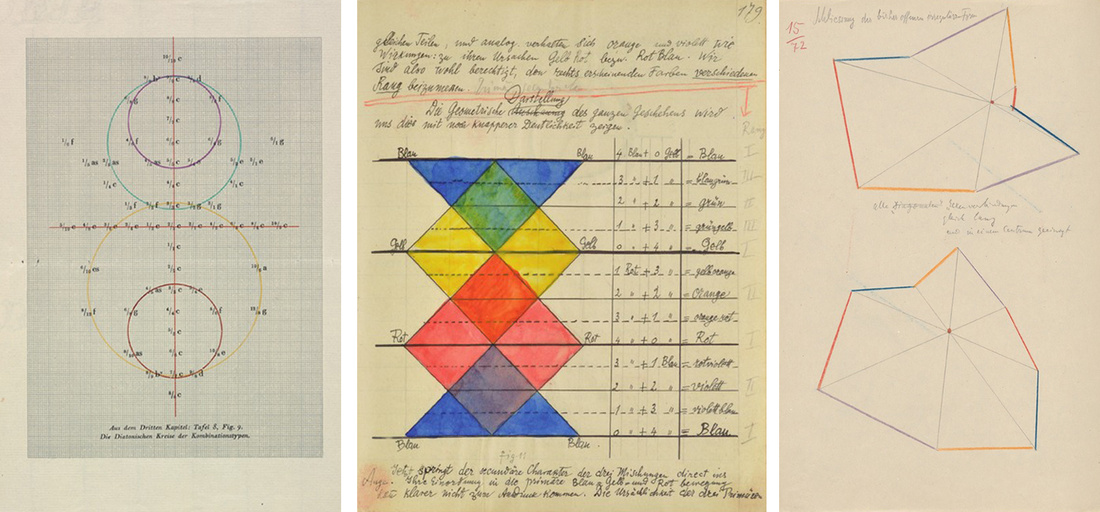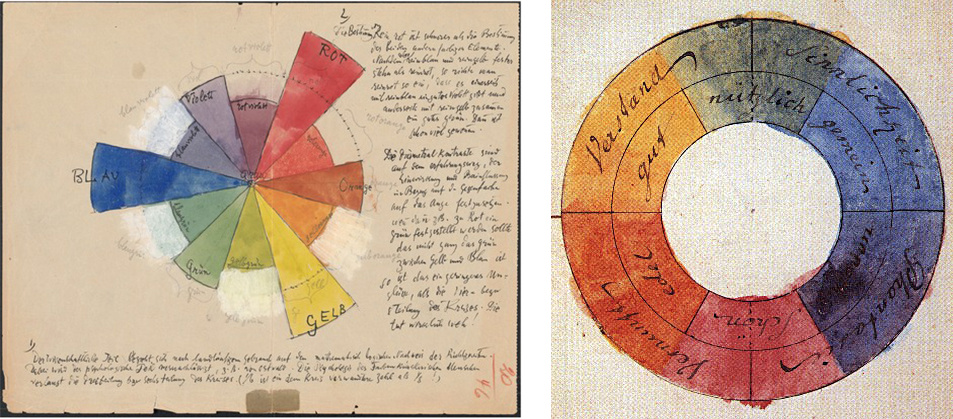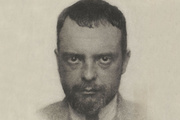How to Be an Artist, According to Paul Klee
One of the most celebrated artists of the 20th century, Paul Klee was also a prolific teacher, serving as a faculty member of the Bauhaus school between 1921 and 1931. Promoting a theoretical approach to artmaking, the painter taught a variety of courses across disciplines, from bookbinding to basic design, and left behind over 3,900 pages in lecture notes. These documents, partly compiled in Klee’s Pedagogical Sketchbook (1925), reveal the artist’s innovative and unusual lesson plans, which often provided students with a step-by-step approach to artistic expression. We’ve pulled some of his key lessons about art and design. Let’s start with the basics.
Lesson #1: Take a Line for a Walk
 Pages from Paul Klee’s notes. Images via Zentrum Paul Klee.
Pages from Paul Klee’s notes. Images via Zentrum Paul Klee.
“An active line on a walk, moving freely, without goal.” So begins Klee’s Pedagogical Sketchbook, which served as something of a textbook for many Bauhaus students. Five pages follow this famous description of the most basic of human marks, outlining the various types of lines, from those that circumscribe themselves to others that contain fixed points. Each example is accompanied by a diagram, which Klee likely drew on the blackboard during his lectures.
Many of Klee’s lessons center around this type of categorization, demonstrating the multiple ways in which a point can become a line, a line can become a plane, and so on. Beginning with the fundamentals, Klee modeled his teaching methods after the way children learn to read. “First letters, then symbols, then, finally, how to read and write,” he explained. Just as you can rearrange a series of letters to make different words, Klee would ask his students to repeat the same form in as many positions as possible. Such painstaking tasks would lay the groundwork for future works of art and design, and needed to be mastered before tone and color entered the picture.
Lesson #2: Observe a Fishtank
When Klee hosted classes in his home, he often required that students spend time observing the tropical fish in his large aquarium. The artist would turn the lights on and off, coaxing the fish to swim and hide, while encouraging students to carefully take note of their activity.
For those who know Klee as the “father of abstract art,” this lesson may seem surprising. However, Klee was deeply concerned with creating movement in his compositions. And he asserted that all artworks—even the most abstract—should be inspired by nature. “Follow the ways of natural creation, the becoming, the functioning of forms,” he taught his students. “Then perhaps starting from nature you will achieve formations of your own, and one day you may even become like nature yourself and start creating.”
Lesson #3: Draw the Circulatory System
Klee studied nature obsessively, and took a particular interest in the branching forms of plants, organ systems, and waterways. In his lectures, he described these patterns with scientific specificity, mapping mathematical equations and arrow-filled diagrams on the board. He explored how seeds sprout, how leaves develop ribs, and how lakes break off into streams, almost always ending with an awe-inspiring assertion about the magic contained in nature’s growth and development.
In one of these lessons, Klee explored the circulatory system, sketching on the chalkboard the movement of blood through the body. He claimed that this bodily process reflected the manner in which art is created. Afterwards, Klee asked his students to draw the circulatory system themselves. Their renderings, he insisted, should portray the transition of blood from stage to stage, shifting from red to blue, using line and density to represent shifts in weight, nutrients, and force. Go ahead, give it a try.
Lesson #4: Weigh the Colors
 Left: Paul Klee’s color chart, from his notes. Image via Zentrum Paul Klee; Right: Goethe’s color wheel, published in Theory of Colours. Image via Wikimedia Commons.
Left: Paul Klee’s color chart, from his notes. Image via Zentrum Paul Klee; Right: Goethe’s color wheel, published in Theory of Colours. Image via Wikimedia Commons.
Only after students grasped the intricacies of lines and planes—and could find these forms in nature—did Klee introduce color. Like much of his teachings, Klee’s lessons about color combined scientific precision with a deep sense of mysticism. His theories primarily drew upon Johann Wolfgang von Goethe’s color wheel, put forth a century earlier, in 1809, which proposed the idea that red opposed green, orange opposed blue, and yellow opposed violet.
Klee added a new dimension to this diagram, turning it into a sphere, with white at the top and black at the base. This framework, he taught, should encompass all aspects of color, including hue, saturation, and value. Klee required his students to create color diagrams of their own, including one assignment in which they visually weighed one color against another—the color red, as it turns out, is heavier than the color blue.
While grounded in science, Klee was also a romantic when it came to color. He often made connections between color and music, explaining that combinations of colors (much like musical notes) can be harmonious or dissonant depending on the pairing. He would sometimes even play the violin for his students. Klee’s most existential statement about color, however, came from beyond the classroom. “Color and I are one,” he declared in his diary in 1914. “I am a painter.”
Lesson #5: Study the Greats
When discussing the work of other artists, Klee used the following metaphor. If a new product like a toothpaste or a laundry detergent was popular with customers, its competitors should research the item’s chemical elements so that they could replicate the success. Or if a food induced illness, scientists should strive to determine which specific ingredients were poisonous and which were benign.
As such, artists should break down the artworks of their peers and predecessors into the most elementary components—line, form, and color—to determine what makes an image successful or problematic. “We do not analyze works of art because we want to imitate them or because we distrust them,” he once said. Instead, we do so “as to begin to walk ourselves.”
In his later years at the Bauhaus, Klee provided students with feedback on their works in his home. Students would bring in their fresh paintings and place them on empty easels, as Klee’s unfinished works hung in the background. Klee would sit, gliding back and forth in his rocking chair, and inspect the images in silence. Only then would he provide an analysis of the works, albeit in his famously lofty fashion, speaking to a larger problem in the field of painting or identifying a subconscious idea that manifested itself in the work. Afterward, the class would sit around a large, glazed clay pot, smoke cigarettes, and discuss artmaking. Of all the Bauhaus masters, Klee was the only one who did not give grades.
—Sarah Gottesman





沒有留言:
張貼留言